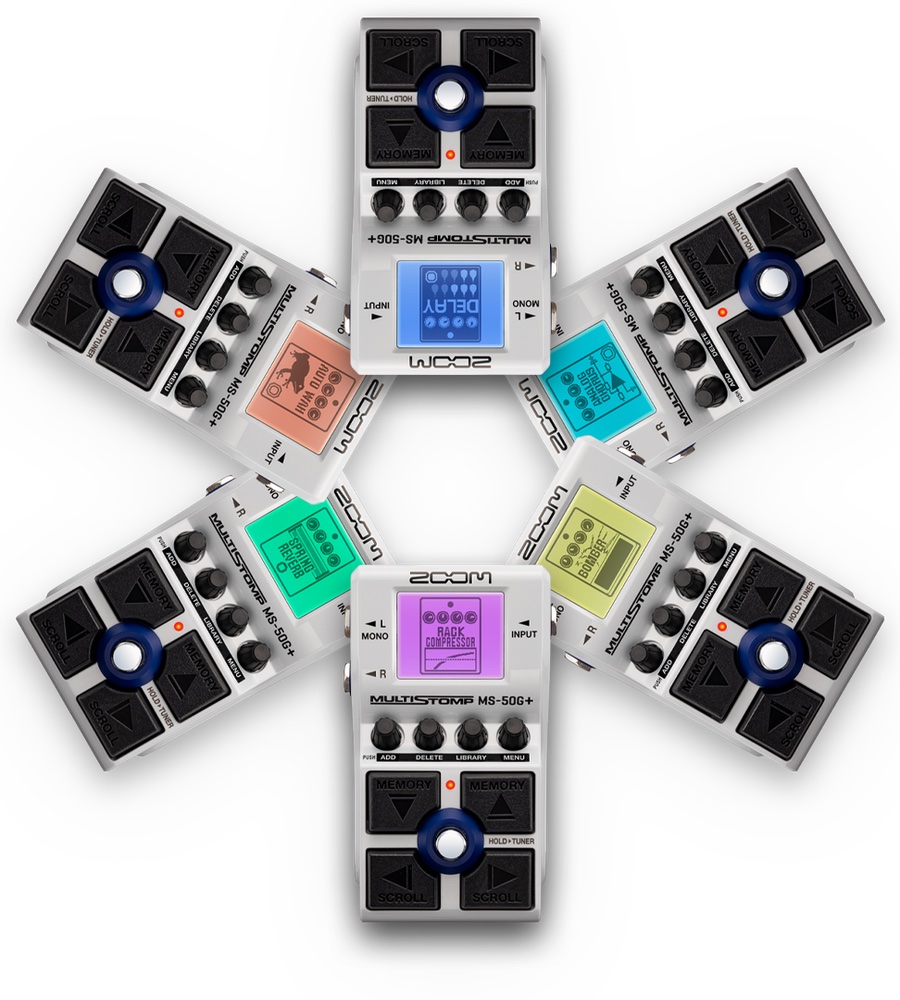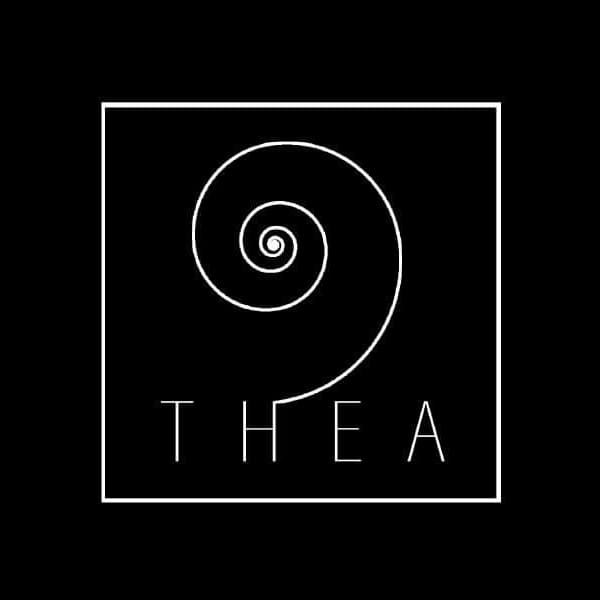The Zoom MS-50G+ : Is it Really the Pedal Your Board Has been Waiting for?
As an Amazon Associate, I earn from qualifying purchases. That means I earn commissions from my sponsored links or I make money when readers (you) purchase items through my links. Your purchase allows me to continue working as a stay-at-home dad who moonlights as a farmer and a musician. Needless to say, this post contains affiliate links.
Here we go again, Zoom has released another pedal that has guitarists all over the world reaching for their pockets. But is it really the pedal your board has been waiting for?

Playing the guitar is an expensive hobby. Especially if you’re into guitar pedals. Let me tell you this: Guitar pedals cost money.
A good guitar pedal costs anywhere from $100 to $300. And you’d think getting one pedal is enough. Oh no. Too many guitarists have been fooled by the idea that you can only have 1.
Let’s say you start with a basic overdrive pedal. Cha-ching! There goes $100 to $150.
That can quickly turn into adding another one, a chorus or a delay pedal perhaps. There goes another $150. And now you have two pedals on your board. And you’re out $200 to $300 dollars.
Oh yeah, you’ll need a tuner. Good ones cost $100 to $150.
Add a phaser. That’s another $100 to $150.
A flanger. Probably $100. Or $150.
A wah pedal. Another $150.
You see where I’m getting here?
A good board with 6 pedals from good companies can easily cost you $1000.
Unless you have deep pockets, price isn’t going to matter in your pursuit for getting the right tone.
So, how would you like to have a hundred guitar pedals for the price of 1?
This is what the Zoom MS-50G+ is offering to guitarists out there. And it’s perfect for those who are just starting out their pedal collection.
What’s so Special About the MS-50G+ ?
The MS-50G+ is what you’d get if a G2 Four and an old MS-50G had a baby. It takes the appearance of the MS-50G and the advanced functionalities of the G2 Four.
The small form factor and the advanced features are enough to warrant a purchase.
Setting Expectations
Is the Zoom MS-50G+ really the pedal your board has been waiting for? Let’s set your expectations straight.
I was one of those who immediately bought the MS-50G when it came out in 2012. I was also one of those who immediately got rid of it in 2012.
The same thing happened when the MS-100BT came out. I was simply enamored with the idea of using Bluetooth to edit my effects pedal. That pedal didn’t last long.
But it’s not because these were bad products. I was just simply expecting too much out of it. Especially sound-wise. You see, I already had a board filled with Boss and Digitech pedals. And I expected Zoom’s DS-1 simulation to sound exactly like my actual Boss DS-1.
That wasn’t going to happen.
Your Zoom’s effects pedal simulation will never sound exactly like the real thing. It will be close but still, no cigar.
Does it matter?
Not really.
In a live setting with an audience that’s just there to enjoy music, I bet the Zoom MS-50G+ is going to be enough.
Key Differences Between the Zoom MS-50G and the Zoom MS-50G+
Even though the Zoom MS-50G+ already exists, Zoom has made no move to remove the older MS-50G from store shelves. The Zoom MS-50G is still available. And it will probably be available for a short window or until supplies last.
Now if you already have the MS-50G, there’s really no need to go and buy the MS-50G+. If you’re thinking about the ease of editing or choosing effects or custom patches, you’re better off buying the Wingman from NinjaFox Engineering.
Here’s a table comparing the MS-50G+ and the MS-50G. And just for fun, let’s add the MS-100BT to the mix.
First, the similarities:
| Specs | MS-100BT | MS-50G | MS-50G+ |
| Maximum Number of Simultaneous Effects | 6 |
| User Patch Memories | 100 |
| Sampling Frequency | 44.1 kHz |
| A/D Conversion | 24-bit 128× oversampling |
| D/A Conversion | 24-bit 128× oversampling |
| Power | AC adapter: 9V DC 500mA center negative (ZOOM AD-16) 2 AA batteries (alkaline, lithium or rechargeable NiMH batteries) |
| Estimated Operation Times | Alkaline batteries: about 7 hours | NiMH batteries (1900 mAh): about 6.5 hours | Lithium batteries: about 14 hours |
And Now for the Differences:
| Specs | MS-100BT | MS-50G | MS-50G+ |
| Signal Processing | 32-bit floating point and 32-bit fixed point | 32-bit floating point and 32-bit fixed point | 32-bit |
| Frequency Response | 20 Hz – 20 kHz +1 dB, -3 dB (into 10 kΩ load) | 20 Hz – 20 kHz +1 dB, -3 dB (into 10 kΩ load) | 20 Hz – 20 kHz (+0.5 dB/−0.5 dB) (when 10kΩ load) |
| Display | LCD | LCD | 160×128 dot-matrix LCD |
| Input | 2 x 1/4″ phone jack | Rated input level: -20 dBm* | Input impedance: 1MΩ | 1 x 1/4″ monaural phone jack | Rated input level: -20 dBm* | Input impedance: 1MΩ | Standard mono phone jack | Rated input level: −20 dBu | Input impedance (line): 470 kΩ |
| Output | 2 x 1/4″ monaural phone jack | Maximum Output Level: +5 dBm (output impedance load of 10 kΩ or more) | 2 x 1/4″ monaural phone jack | Maximum Output Level: +5 dBm (output impedance load of 10 kΩ or more) | Standard mono phone jacks | Maximum output level: +7.2 dBu (when output impedance 10 kΩ or higher) |
| Input S/N | NA | NA | 122 dB |
| USB | NA | NA | Port: USB 2.0 Type-C/Supported cable type: Type-C Handy Guitar Lab: USB1.1 Full Speed • Use a USB cable that supports data transfer. USB bus power is supported. |
| Dimensions | 130.3 (D) x 77.5 (W) x 58.5 (H) mm | 130.3 (D) x 77.5 (W) x 58.5 (H) mm | 133 mm (D) × 79 mm (W) × 61 mm (H) |
| Weight | 360g (without batteries) | 350g (without batteries) | 353 g (excluding batteries) 400 g (including batteries) |
On paper, there doesn’t seem to be enough changes between the 3 models. I would suggest buying the MS-50G+ if you don’t have the 2 previous models or if you really, really, really just want to buy one.
Personalize Your MS-50G+ by Creating Custom Patches
The beauty of Zoom’s products is your ability to create custom patches. You can actually do this with other Digital Multi-Effects pedals from Boss, Mooer, Joyo, and others but Zoom goes one further by allowing you to change the arrangement of your chain.
The pedal your board has been waiting for should offer a level of customizability, right?
Now I have the Zoom G5n which allows me to chain up to 9 pedals at once. The Zoom MS-50G+ only allows you to chain up to 6 effects. And let me tell you this: 6 is enough.
For some people that’s not enough. And I respect that.
But how many effects pedals do you really need?
Short Break: Guitarists Who Don’t Rely on Too Many Pedals
Zakk Wylde – has a very minimalist pedalboard. He has a Super Overdrive, a Chorus, a Wah pedal, and a volume pedal.
Ritchie Kotzen – favors the Fly Rig. He even has a signature Fly Rig.
Eric Clapton – usually just uses a Wah, a Chorus, and an Overdrive
Nuno Bettencourt – Last I checked uses a Boss GT-8 and a few other pedals including a Proco Rat. He also makes sure there’s a Tuner on board.
And the greatest guitarists? They don’t use any pedals at all. Check out BB King, Duane Allman, and Dickey Betts.
So don’t worry if you only have one pedal or two on your board. As long as one is the MS-50G+ you’re good. If you have to start building a board, start with the pedal your board has been waiting for and grow it from there.
Now back to our regular programming.
Setting Up Your Chain
The tuner is already a built-in feature in your MS-50G+. You don’t need to include it in your chain. So that still leaves you with 6.
Now, if I were to pick 6 or set up my MS-50G+ my way. I’d only need to create 4 custom patches and I’d name them Clean 1, Clean 2, Dirt, and Solo. This is what I use for my band, AcidRadius.
Clean 1 and Clean 2 are obviously for my Clean channels. Dirt would be my overdriven sound. And Solo, well, that’s for my solo parts. Mind you, I’m not too heavy on effects. In fact, I have a very under-utilized Zoom G5n.
Clean 1
Overdrive -> Delay
Clean 2
Overdrive -> Chorus
Dirt
Overdrive -> Distortion
Solo
Overdrive -> Distortion -> Phaser -> Delay
On and Offstage Durability
Although Zoom is known for some really bad products, think Zoom G1, Zoom G1Xon, Zoom 606, etc, that were built out of cheap plastic. These pedals has the tendency to fall apart because of the amount of abuse they received from their users.
In the past, if you had a Zoom multi-effects pedal, you would have to develop a “light” foot stomp which was very much unlike how you would stomp on pedals from Boss or Digitech. Even the Ibanez pedals (especially the SoundTank series) could withstand being thrown around.
A Zoom pedal in the past was treated like an expensive glass figurine. You protected it as much as you could when transporting it from your place to the stage. You set it down with care making sure you don’t drop it even an inch of the ground.
Having a Zoom pedal on stage wasn’t as much fun because you were constantly worrying about it getting stepped on accidentally which is ironic because these things were supposed to be stepped on.
The Zoom MS-50G+ isn’t a fragile flower.
It’s built to withstand a lot of abuse. After all, this is the pedal your board has been waiting for, right?
It’s built with a metal frame and is designed to withstand the rigors of live performance.
You can kick it around, stomp on it excessively because you got carried away or move away from it knowing that it’s not going to get crushed by a careless bandmate.
Now if only Zoom can make their future products waterproof, that’d be perfect and it will definitely give all other pedal companies a run for their money.
Just for Fun
So, is it really the pedal your board has been waiting for?
I know I want one. I don’t have it exactly planned out how I’m going to use it but I must have one.
The Zoom MS-50G+ has color screens. It changes based on the effects group you’re using. Wouldn’t it be fun to get 6 of these and use them as stand-alone pedals in a daisy chain?

I know, I know, it sounds too ostentatious. But then again, you now have 6 MS-50G+ pedals on your board that you can tweak to your liking. Like having actual pedals but only this time, each one can be changed to suit your needs.
The last question on my mind is: “how long will it be until they release the MS 70CDR+ ?”




